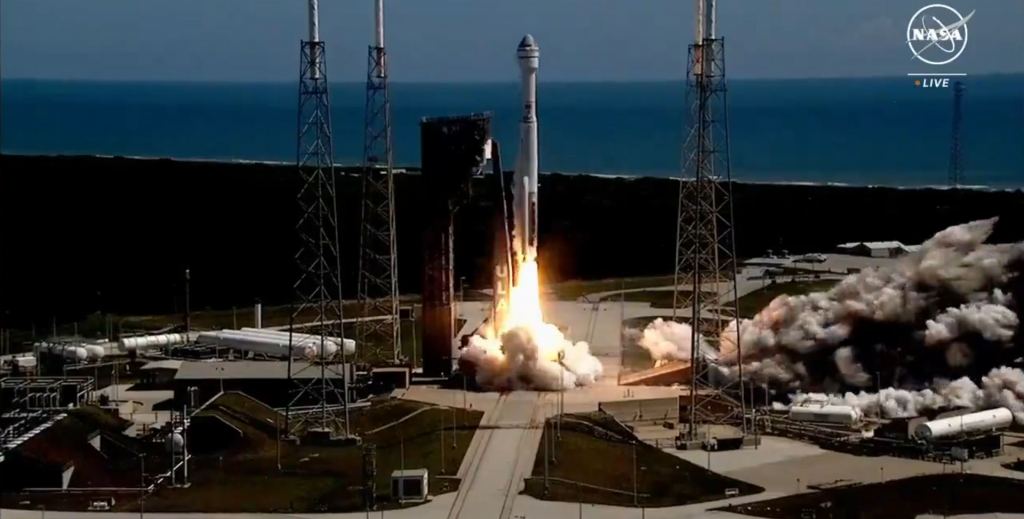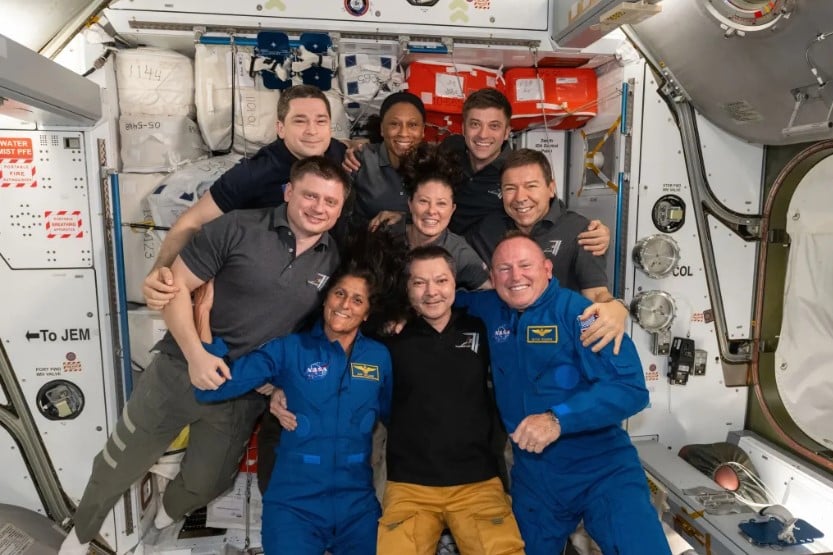Astronauts Butch Wilmore and Suni Williams will remain on board the International Space Station until February, returning to Earth on a SpaceX Crew Dragon. NASA announced its decision over the weekend, citing concerns about the safety of the Boeing Starliner capsule due to helium leaks and thruster issues. The troublesome Starliner is slated to undock from the ISS without a crew in early September and attempt to return on autopilot, landing in the New Mexico desert.
NASA said this allows them and Boeing to continue gathering test data on Starliner during its uncrewed flight home, while also not accepting more risk than necessary for the crew.
"Decisions like this are never easy, but I want to commend our NASA and Boeing teams for their thorough analysis, transparent discussions, and focus on safety during the Crew Flight Test," Ken Bowersox, associate administrator for NASA's Space Operations Mission Directorate said in a NASA press release. "We've learned a lot about the spacecraft during its journey to the station and its docked operations. We also will continue to gather more data about Starliner during the uncrewed return and improve the system for future flights to the space station."
Wilmore, 61, and Williams, 58, flew to the ISS in June on Starliner for the long-awaited Boeing Crew Flight Test. The two astronauts are not strangers to long-duration missions, as they have both served on ISS expeditions and they will now officially join the Expedition 71/72 crew on board the space station. Their ride home is scheduled to launch in late September with two astronauts instead of the usual four to make room for Wilmore and Williams to return home with the two Crew-9 members in February 2025.
"This has not been an easy decision, but it is absolutely the right one," Jim Free, NASA's associate administrator said at the briefing on Saturday.
The decision is especially disappointing for Boeing, as the company has been plagued with problems with its airplanes and was counting on Starliner's first crewed trip to revive the troubled spacecraft program, which has suffered years of delays due to issues with Starliner. The company had asserted Starliner was safe based on all the recent thruster tests both in space and on the ground.
While Boeing did not participate in Saturday's news conference, they released a statement saying, "Boeing continues to focus, first and foremost, on the safety of the crew and spacecraft." The company said it is preparing the spacecraft for a safe and successful return.
NASA and Boeing identified the helium leaks during the flight to the ISS, and the thruster issues after the spacecraft experienced issues with its reaction control thrusters as Starliner approached the space station on June 6.
"Since then, engineering teams have completed a significant amount of work, including reviewing a collection of data, conducting flight and ground testing, hosting independent reviews with agency propulsion experts, and developing various return contingency plans," NASA said in their press release. "The uncertainty and lack of expert concurrence does not meet the agency's safety and performance requirements for human spaceflight, thus prompting NASA leadership to move the astronauts to the Crew-9 mission."
The fact that Starliner will return home without a crew is not an issue, as is designed to operate autonomously and previously completed two uncrewed flights. This mission is the second time the Starliner has flown to the ISS and the third flight test overall. During the first uncrewed test flight (OFT-1), which took place back in December 2019, the Starliner launched successfully but failed to make it to the ISS because of software issues. After making 61 corrective actions recommended by NASA, another attempt was made (OFT-2) on May 22nd, 2022. That flight successfully docked to the ISS, staying there for four days before undocking and landing in the White Sands Missile Range in New Mexico.
This first crewed flight of Starliner was supposed to validate the spacecraft as part of NASA's Commercial Crew Program (CCP), with the hope of it working alongside SpaceX's Crew Dragon to make regular deliveries of cargo and crew to the ISS. The launched was delayed when parachute and other issues cropped up, including a helium leak in the capsule's propellant system that scrubbed a launch attempt in May. The leak eventually was deemed to be isolated and small enough to pose no concern. But more leaks occurred following liftoff, and five thrusters also failed.
NASA and Boeing will work together to adjust end-of-mission planning and Starliner's systems to set up for the uncrewed return in the coming weeks. Starliner must return to Earth before the Crew-9 mission launches to ensure a docking port is available on station.
"Starliner is a very capable spacecraft and, ultimately, this comes down to needing a higher level of certainty to perform a crewed return," said Steve Stich, manager of NASA's Commercial Crew Program. "The NASA and Boeing teams have completed a tremendous amount of testing and analysis, and this flight test is providing critical information on Starliner's performance in space. Our efforts will help prepare for the uncrewed return and will greatly benefit future corrective actions for the spacecraft."
 Universe Today
Universe Today



